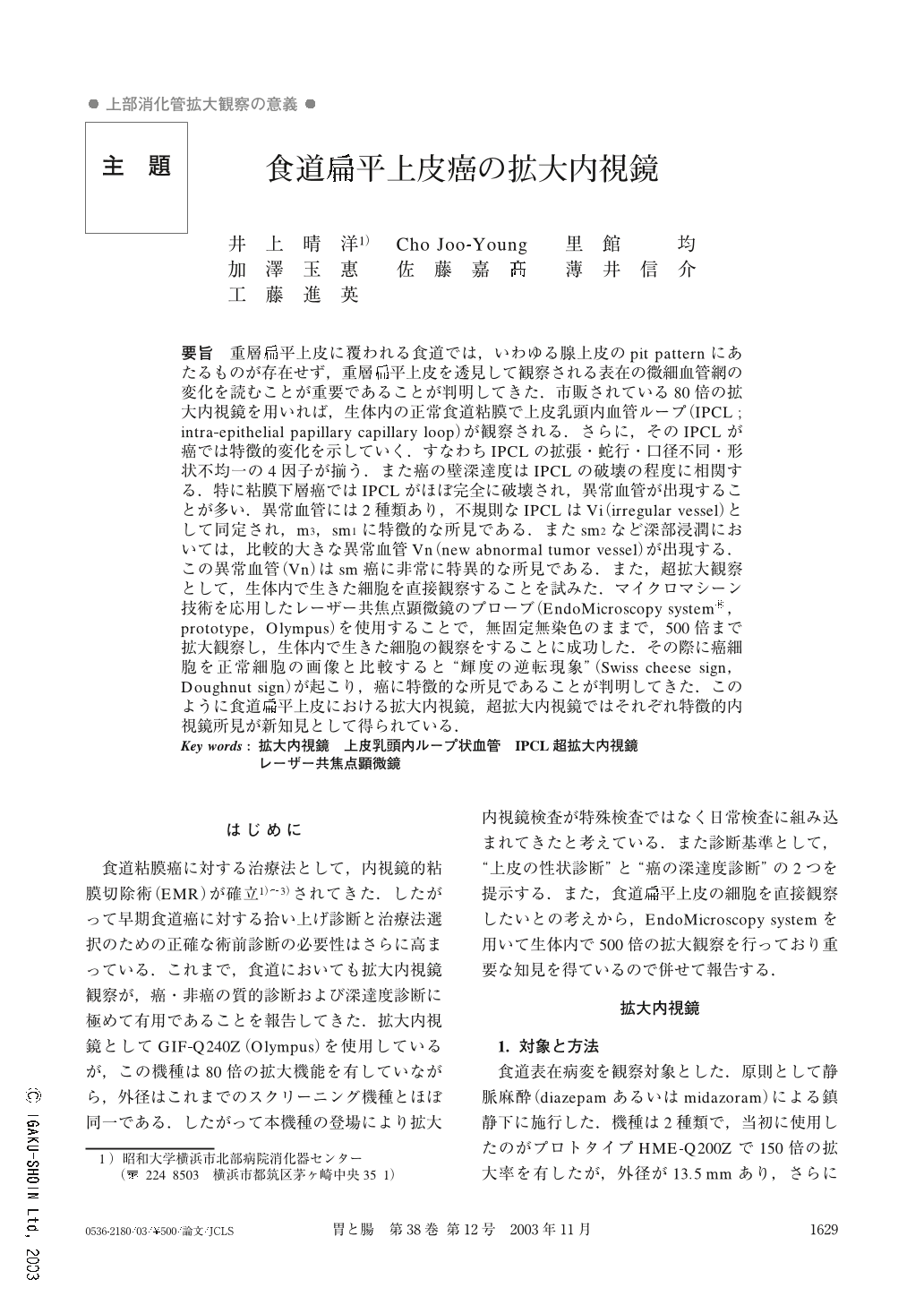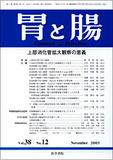Japanese
English
- 有料閲覧
- Abstract 文献概要
- 1ページ目 Look Inside
- 参考文献 Reference
- サイト内被引用 Cited by
要旨 重層扁平上皮に覆われる食道では,いわゆる腺上皮のpit patternにあたるものが存在せず,重層扁平上皮を透見して観察される表在の微細血管網の変化を読むことが重要であることが判明してきた.市販されている80倍の拡大内視鏡を用いれば,生体内の正常食道粘膜で上皮乳頭内血管ループ(IPCL ; intra-epithelial papillary capillary loop)が観察される.さらに,そのIPCLが癌では特徴的変化を示していく.すなわちIPCLの拡張・蛇行・口径不同・形状不均一の4因子が揃う.また癌の壁深達度はIPCLの破壊の程度に相関する.特に粘膜下層癌ではIPCLがほぼ完全に破壊され,異常血管が出現することが多い.異常血管には2種類あり,不規則なIPCLはVi(irregular vessel)として同定され,m3,sm1に特徴的な所見である.またsm2など深部浸潤においては,比較的大きな異常血管Vn(new abnormal tumor vessel)が出現する.この異常血管(Vn)はsm癌に非常に特異的な所見である.また,超拡大観察として,生体内で生きた細胞を直接観察することを試みた.マイクロマシーン技術を応用したレーザー共焦点顕微鏡のプローブ(EndoMicroscopy system®,prototype,Olympus)を使用することで,無固定無染色のままで,500倍まで拡大観察し,生体内で生きた細胞の観察をすることに成功した.その際に癌細胞を正常細胞の画像と比較すると“輝度の逆転現象”(Swiss cheese sign,Doughnut sign)が起こり,癌に特徴的な所見であることが判明してきた.このように食道扁平上皮における拡大内視鏡,超拡大内視鏡ではそれぞれ特徴的内視鏡所見が新知見として得られている.
Observation of the superficial fine vascular network pattern is the most important diagnostic process in magnifying endoscopy of the esophagus. When we use magnifying endoscopy (GIF-Q240Z), 80-fold magnifying power is acquired and IPCL (intra-epithelial papillary capillary loop) is clearly demonstrated. In carcinoma in situ, IPCL shows characteristic changes such as dilatation, weaving, different caliber, and different shape in each IPCL. Cancer infiltration depth also corresponds to the destruction level of IPCL. In submucosally invasive cancer, new abnormal tumor vessels (Vn) can be seen.
On the other hand, authors have endeavored to see living cells of the esophagus during endoscopic examination. Using micromachine technology and a laser scanning confocal microscope, we succeeded in observing a living human cell. EndoMicroscopy system (prototype, Olympus) has a 500-fold magnifying power. In normal squamous epithelium, a nucleus is shown as a high intensity spot and the cell body is observed as a low intensity area. This distribution interchanges once the tissue becomes carcinomatous. This finding was statistically proven. In cancerous tissue, Swiss cheese sign is the most important finding. We believe that this kind of non-invasive optical diagnosis will come to play a very important role in the field of endoscopy.

Copyright © 2003, Igaku-Shoin Ltd. All rights reserved.


